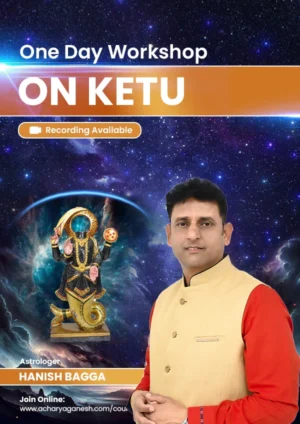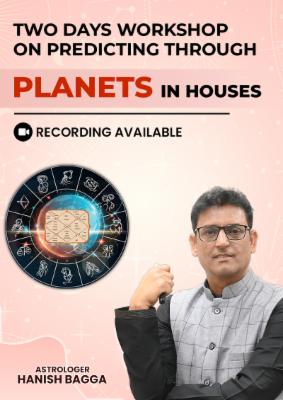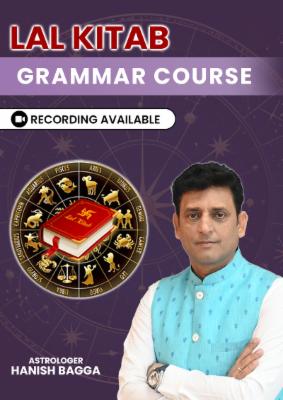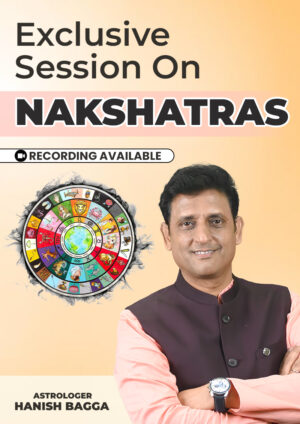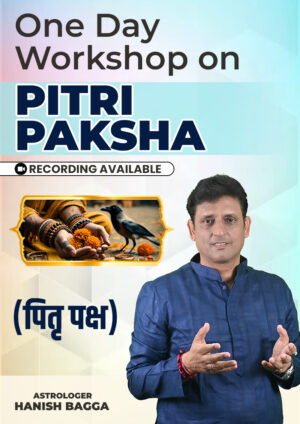- Introduction: The Power of Divine Names:
- The Origins and History of Vishnu Sahasranama Stotram
- Understanding the Structure of Vishnu Sahasranama Stotram
- The Deeper Meanings Behind the Names
- The Practice of Chanting Vishnu Sahasranama Stotram
- The Benefits of Chanting Vishnu Sahasranama Stotram
- Vishnu Sahasranama Stotram in Modern Times
- Learning and Memorizing the Vishnu Sahasranama Stotram
- The Role of Vishnu Sahasranama Stotram in Hindu Rituals
- Interpretations and Commentaries on Vishnu Sahasranama Stotram
- Vishnu Sahasranama Stotram and Interfaith Dialogue
- Conclusion: The Timeless Appeal of Vishnu Sahasranama Stotram
- FAQs About Vishnu Sahasranama Stotram
Introduction: The Power of Divine Names:
In the vast ocean of Hindu spirituality, few texts hold as much reverence and significance as the Vishnu Sahasranama Stotram. This ancient Sanskrit hymn, which translates to “Thousand Names of Vishnu,” is a beautiful tapestry of devotion, philosophy, and spiritual wisdom. For centuries, devotees have chanted these sacred names, believing in their transformative power and ability to bring peace, prosperity, and enlightenment.
As we embark on this exploration of the Vishnu Sahasranama Stotram, we’ll uncover its origins, delve into its profound meanings, and discover why it continues to captivate the hearts and minds of millions around the world. Whether you’re a seasoned practitioner or new to Hindu traditions, this journey promises to be both enlightening and inspiring.
The Origins and History of Vishnu Sahasranama Stotram
Ancient Roots in the Mahabharata
The Vishnu Sahasranama Stotram finds its roots in the epic Mahabharata, one of the most revered texts in Hindu literature. Specifically, it appears in the Anushasana Parva, the 13th book of the Mahabharata. The story goes that as the great warrior Bhishma lay on his deathbed of arrows, he imparted this sacred knowledge to Yudhishthira, the eldest of the Pandava brothers.
The Sage Vyasa and Divine Inspiration
It is believed that the sage Vyasa, the author of the Mahabharata, received divine inspiration to compose the Vishnu Sahasranama Stotram. This connection to Vyasa lends the hymn additional authority and sanctity in Hindu tradition.
Timeless Relevance
Despite its ancient origins, the Vishnu Sahasranama Stotram has remained relevant and widely practiced throughout the centuries. Its enduring popularity speaks to the universal themes and truths it encompasses, transcending time and cultural boundaries.
Understanding the Structure of Vishnu Sahasranama Stotram
The Composition: 1000 Names in 142 Verses
The Vishnu Sahasranama Stotram is a meticulously structured composition. It consists of 142 verses (shlokas) in Sanskrit, with each verse containing eight syllables. These verses collectively encompass the thousand names of Lord Vishnu.
The Significance of the Number 1000
The number 1000 holds special significance in Hindu philosophy. It represents completeness and infinity. By reciting these 1000 names, devotees symbolically invoke the infinite aspects and qualities of the Divine.
Sanskrit and Its Nuances
The Stotram is composed in Sanskrit, a language known for its depth and ability to convey complex concepts in concise forms. Each name in the Vishnu Sahasranama is carefully chosen, often with multiple layers of meaning that reveal themselves upon deeper contemplation.
The Deeper Meanings Behind the Names
Philosophical Concepts
Many names in the Vishnu Sahasranama Stotram encapsulate profound philosophical concepts. For example:
- “Advaitah” (The Indivisible One) speaks to the non-dual nature of reality
- “Sarvagah” (The All-Pervading One) reflects the omnipresence of the Divine
- “Achyutah” (The Imperishable One) points to the eternal nature of the Supreme Being
Qualities and Virtues
The Stotram also describes various divine qualities and virtues, inspiring devotees to cultivate these attributes in their own lives:
- “Dayanidhih” (The Treasure of Compassion)
- “Satyaparakramah” (One with True Valor)
- “Kshaminam Varah” (The Best Among the Forgiving)
Cosmic and Earthly Roles
Some names describe Vishnu’s various roles in the cosmos and on Earth:
- “Jagat Setu” (The Bridge of the World)
- “Dharmadhyakshah” (The Overseer of Dharma)
- “Bhuvaneshvarah” (The Lord of the Worlds)
The Practice of Chanting Vishnu Sahasranama Stotram
Daily Recitation
Many devotees make it a practice to recite the Vishnu Sahasranama Stotram daily. This regular practice is believed to bring numerous benefits, both spiritual and material.
Proper Pronunciation and Rhythm
Correct pronunciation and rhythm are considered important in the recitation of the Stotram. Many practitioners use audio guides or learn from experienced chanters to perfect their recitation.
Mindful Engagement
While chanting, practitioners are encouraged to reflect on the meanings of the names and to visualize the divine qualities they represent. This mindful engagement deepens the spiritual impact of the practice.
The Benefits of Chanting Vishnu Sahasranama Stotram
Spiritual Growth
Regular chanting of the Vishnu Sahasranama Stotram is believed to accelerate spiritual growth. It helps in purifying the mind, increasing devotion, and fostering a deeper connection with the Divine.
Mental and Emotional Well-being
Many practitioners report experiencing increased peace of mind, reduced stress, and improved emotional balance through the regular recitation of the Stotram.
Material Blessings
In addition to spiritual benefits, the Vishnu Sahasranama Stotram is also believed to bestow material blessings. Devotees often pray for health, prosperity, and success while chanting the hymn.
Vishnu Sahasranama Stotram in Modern Times
Accessibility Through Technology
In the digital age, the Vishnu Sahasranama Stotram has become more accessible than ever. Numerous apps, websites, and YouTube videos offer the text, audio recordings, and explanations of the Stotram.
Cross-cultural Appeal
The universal themes and profound wisdom contained in the Vishnu Sahasranama Stotram have attracted interest from people of various cultural backgrounds, not just those from Hindu traditions.
Scientific Studies
Some researchers have begun to study the effects of chanting the Vishnu Sahasranama Stotram on mental health and well-being, bringing a scientific perspective to this ancient practice.
Learning and Memorizing the Vishnu Sahasranama Stotram
Start with Small Sections
For those interested in learning the Stotram, it’s advisable to start with small sections. Many begin with the first few verses and gradually expand their practice.
Use of Mnemonics
Some practitioners use mnemonic devices to help memorize the names. This can include creating stories or associations that link the names in a memorable way.
Regular Practice
Consistent practice is key to memorizing the Stotram. Even a few minutes of daily recitation can lead to significant progress over time.
The Role of Vishnu Sahasranama Stotram in Hindu Rituals
Puja Ceremonies
The Vishnu Sahasranama is often included in puja ceremonies, especially those dedicated to Vishnu or his avatars like Krishna or Rama.
Special Occasions
The Stotram is frequently chanted on special occasions such as Ekadashi (the eleventh day of each lunar fortnight), which is considered particularly auspicious for Vishnu worship.
Life Cycle Rituals
In some traditions, the Vishnu Sahasranama is incorporated into important life cycle rituals, such as naming ceremonies for newborns or as part of last rites.
Interpretations and Commentaries on Vishnu Sahasranama Stotram
Adi Shankara’s Commentary
One of the most famous commentaries on the Vishnu Stotram was written by the 8th-century philosopher Adi Shankara. His work provides deep insights into the philosophical meanings of the names.
Modern Interpretations
Contemporary scholars and spiritual leaders continue to offer new interpretations of the Stotram, often relating its ancient wisdom to modern life challenges.
Personal Reflections
Many practitioners find value in keeping a journal of their personal reflections on different names as they progress through their study of the Stotram.
Vishnu Sahasranama Stotram and Interfaith Dialogue
Universal Themes
The universal themes present in the Sahasranama Stotram, such as compassion, truth, and the omnipresence of the Divine, provide common ground for interfaith dialogue.
Comparative Studies
Some scholars have drawn parallels between the concepts in the Vishnu Sahasranama Stotram and those found in other religious traditions, fostering greater understanding and respect between faiths.
Spiritual Unity
The Stotram’s emphasis on the many names and aspects of the Divine resonates with the idea of spiritual unity in diversity, a concept that holds relevance in our increasingly interconnected world.
Conclusion: The Timeless Appeal of Vishnu Sahasranama Stotram
As we conclude our exploration of the Vishnu Sahasranama, it’s clear that this ancient hymn continues to hold profound significance in the modern world. Its beautiful blend of devotion, philosophy, and practical wisdom offers something for everyone, from the devoted practitioner to the curious seeker.
The thousand names of Vishnu serve as a mirror, reflecting the infinite aspects of the Divine and, by extension, the potential within each of us. Whether chanted for spiritual growth, emotional balance, or simply as a meditative practice, the Vishnu Stotram remains a powerful tool for self-discovery and inner transformation.
As we face the complexities and challenges of contemporary life, the timeless wisdom encapsulated in these sacred verses continues to provide guidance, solace, and inspiration. The Vishnu Sahasranama Stotram reminds us of the vastness of the Divine and the depth of our spiritual nature, inviting us on a journey of endless discovery and growth.
For interesting astrology-related videos, subscribe to us on Youtube
FAQs About Vishnu Sahasranama Stotram
Q1: What is the best time to chant the Vishnu Sahasranama Stotram?
Ans: While the Vishnu Sahasranama Stotram can be chanted at any time, many practitioners prefer to recite it in the early morning hours, known as Brahma Muhurta (about 1.5 hours before sunrise). This time is considered especially auspicious for spiritual practices. However, consistency is more important than timing, so choose a time that you can maintain regularly.
Q2: How long does it take to chant the entire Sahasranama Stotram?
Ans: The duration can vary depending on the speed of recitation and whether one is chanting from memory or reading. On average, it takes about 30-45 minutes to chant the entire Stotram. Some practitioners may take longer if they pause for contemplation between verses.
Q3: Do I need to understand Sanskrit to benefit from chanting the Stotram?
Ans: While understanding Sanskrit can deepen your appreciation of the Stotram, it’s not necessary to reap benefits from chanting. Many devotees experience positive effects simply from the vibrations of the Sanskrit sounds. However, gradually learning the meanings can enhance your practice and understanding over time.
Q4: Are there any specific rules or preparations before chanting the Vishnu Sahasranama?
Ans: While not mandatory, some traditional practices include:
- Taking a bath before chanting
- Sitting in a clean, quiet place
- Lighting a lamp or incense
- Facing east or north
- Beginning with a short prayer or invocation
Remember, the most important aspect is your sincere devotion and concentration during the chanting.
Know more about astrology: acharyaganesh.com
Q5: Can women chant the Vishnu Sahasranama during menstruation?
Ans: In modern practice, many people believe that spiritual practices like chanting the Vishnu Sahasranama can be done regardless of one’s physical state. However, traditions may vary, and some still observe restrictions during menstruation. It’s a personal choice based on your beliefs and comfort.


